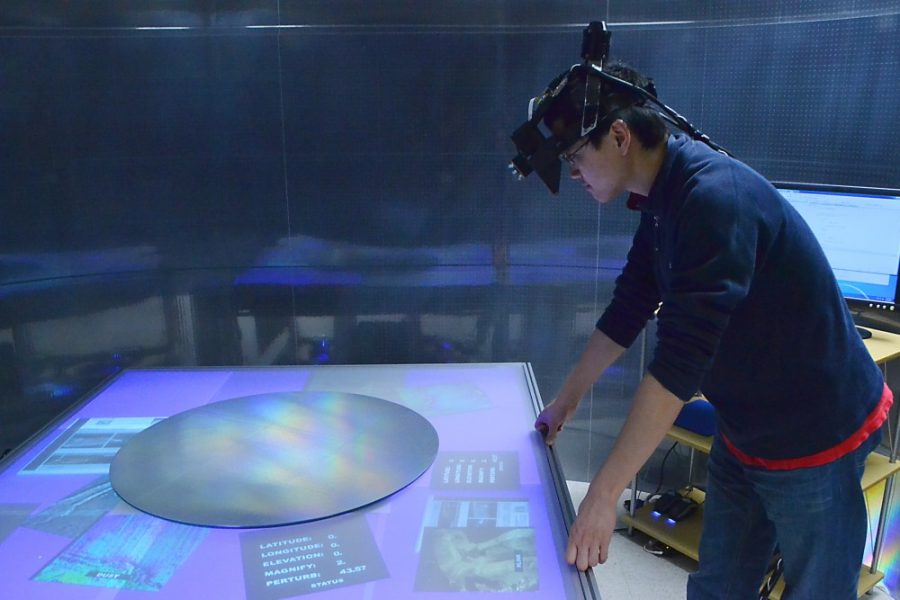The UA raked in about $1 million in patents and other developments last year, sustaining the institution’s 20-year trend of successful inventions.
While original patents, copyrights and inventions are developed by many of the UA’s colleges, much of the growth has been seen in research-intensive areas like the College of Optical Sciences and other units within the College of Science. Copyright has also become prominent in the James E. Rogers College of Law, according to Patrick Jones, director of the UA’s Office of Technology Transfer.
Overall, the university has 170 active U.S. patents, 170 applications that are in the process of becoming patents and 90 provisional patents, which last for one year and serve as quick, “placeholder” patents to allow for further evaluation before an invention becomes patented. The College of Optical Sciences filed 52 of those provisional patents last year, and the college also passed seven patents the same year, a process that takes about three to 10 years.
Several developments in the College of Optical Sciences are currently under production, and many have already made their way into the real-world market, according to Jim Wyant, the college’s dean. The college’s most profitable advancement — which has resulted in the evolution of contact lens manufacturing — has been licensed to manufacturers in the field.
“There are a lot of different types of designs of contact lenses, and when you’re manufacturing them, it’s important that they meet the specs that they are manufactured to,” Wyant said. “Some of our people have come up with very good ways of essentially testing the contact lenses really fast and easy.”
Further details of these developments, including exactly how profitable they have been and which companies have the licenses to use them, remain confidential.
The college’s patents have also seen success in medical imaging, camera technology and even holographic displays. Under development is the world’s first holographic 3-D display, which will implement “telepresence,” or the transferring of someone’s 3-D image. The concept has been seen in a number of science fiction films, but is not yet realized.
The college’s innovative success also resulted in the inception of startup companies, including NP Photonics, a private company that manufactures products for the fiber optics industry formed by Nasser Peyghambarian, chair of Optical Sciences’ photonics and lasers department. Peyghambarian’s company, formed in 1998, uses its products in a number of different fields.
“These products are very tiny fiber lasers that are being used for oil and gas exploration, perimeter security and for any other application that requires a very small and stable laser,” Peyghambarian said.
NP Photonics has since received more than $32 million in capital investment funding, but began with research conducted at the university 13 years ago. The company still manufactures its products on campus.
While the College of Optical Sciences has maintained a strong presence in university innovation, the UA Cancer Center has also made significant progress of its own, namely in the area of cancer prevention and the development of new cancer drugs.
“The Cancer Center has traditionally been one that is involved in drug development, both at the pre-clinical level and also at the clinical level,” said Bob Dorr, a pharmacology professor. “Several pivotal studies that got new cancer drugs approved were spearheaded by investigators here.”
According to Dorr, Cancer Center Director Dr. David Alberts led a study that helped develop carboplatin, an anti-cancer agent that is now used as the standard treatment for lung and ovarian cancer. Carboplatin has become the replacement for a previous agent that was much more toxic.
Dorr said that the significance of the university’s drug development area lies in the strength of the department.
“There’s a lot of work going on at the U of A in designing these targeted drugs,” he said. “We’ve got a terrific chemistry group, and I mean that all-inclusively of both the College of Pharmacy and the College of Science on the main campus. That strength in chemistry has allowed us to start to move into this molecularly-targeted drug area.”
As for patents and innovative developments in general, Amy Phillips, the College of Optical Sciences technology transfer license specialist, said that having this type of intellectual property on campus adds to the university’s reputation as a research institution.
“It makes it a more exciting institution to belong to when you know that your work could actually help somebody,” Phillips said.









